
Fife is a council area, historic county, registration county and lieutenancy area of Scotland. It is situated between the Firth of Tay and the Firth of Forth, with inland boundaries with Perth and Kinross and Clackmannanshire. By custom it is widely held to have been one of the major Pictish kingdoms, known as Fib, and is still commonly known as the Kingdom of Fife within Scotland. A person from Fife is known as a Fifer. In older documents the county was very occasionally known by the anglicisation Fifeshire.

Glenrothes is a town situated in the heart of Fife, in east-central Scotland. It is about 30 miles (48 km) north of Edinburgh and 30 miles (48 km) south of Dundee. The town had a population of 39,277 in the 2011 census, making it the third largest settlement in Fife and the 18th most populous settlement in Scotland. The name Glenrothes comes from its historical link with the Earl of Rothes, who owned much of the land on which the new town has been built; "Glen" was added to the name to avoid confusion with Rothes in Moray and in recognition that the town lies in a river valley. The motto of Glenrothes is Ex terra vis, meaning "From the earth strength", which dates back to the founding of the town.
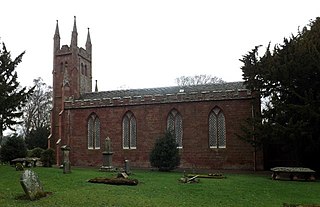
Whittingehame is a parish with a small village in East Lothian, Scotland, about halfway between Haddington and Dunbar, and near East Linton. The area is on the slopes of the Lammermuir Hills. Whittingehame Tower dates from the 15th century and remains a residence.

The Palace of Monimail, also known as Monimail Tower, was a Renaissance palace in Fife, Scotland. A residence of the Archbishops of St Andrews from the 13th century, in the early 17th century Monimail became a chief seat of the Melville family. Lord Monimail is one of the subsidiary titles of the Leslie-Melville Earls of Leven. It was abandoned in the late 17th century and subsequently most of the palace was demolished. One tower remains standing in the grounds of Melville House near the village of Monimail, 4 kilometres (2.5 mi) north of Ladybank.
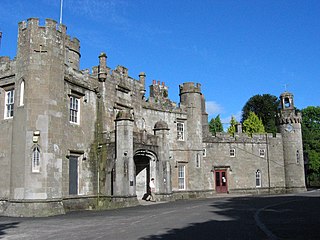
Balloch Castle is an early 19th-century country house situated at the southern tip of Loch Lomond, in West Dunbartonshire, Scotland. Balloch was a property of the Lennox family from the 11th century, and the old castle was built in the 13th century. In the 19th century the estate was purchased by John Buchanan of Ardoch, who demolished the ruins of the old castle and erected the present building. The Tudor Gothic architecture is the work of Robert Lugar. In 1915 Balloch was bought by Glasgow City Corporation, and has been leased by West Dunbartonshire Council since 1975. The estate was designated as a country park in 1980, and since 2002 has been part of Loch Lomond and The Trossachs National Park. Although the house has been periodically used for visitor facilities and council offices, it is now included on the Buildings at Risk Register. Balloch Castle is a category A listed building, and the estate is included on the Inventory of Gardens and Designed Landscapes in Scotland.

Markinch (, is both a village and a parish in the heart of Fife, Scotland. According to an estimate taken in 2008, the village has a population of 2,420. The civil parish had a population of 16,530. Markinch is east of Fife's administrative centre, Glenrothes and preceded Cupar as Fife's place of warranty and justice prior to the 13th century.

Cambo Estate lies close to the village of Kingsbarns in north-east Fife, Scotland. It is located in the East Neuk, 10 kilometres (6.2 mi) south-east of St Andrews. At the heart of the estate lies the 19th-century Cambo House, the home of Sir Peter Erskine, Bt and Lady Catherine Erskine. The gardens of Cambo are open to the public, and include the walled garden and seasonal snowdrop gardens. Elsewhere on the estate is the Kingsbarns Golf Links golf course, which co-hosts the Alfred Dunhill Links Championship every year.

Ross Priory is an early 19th-century country house located west of Gartocharn, West Dunbartonshire, on the south shore of Loch Lomond, Scotland. From the 14th century the estate, known as The Ross, was owned by a branch of the Buchanan family of Buchanan Castle, who built a house here in 1695. The present house is the result of remodelling by James Gillespie Graham and was complete in 1816. The term "priory" does not imply ecclesiastical provenance, but is simply a 19th-century romantic affectation. Sir Walter Scott spent time at Ross Priory in the years following the rebuilding. It was owned by subsequent members of the Leith-Buchanan family until the later 20th century. In 1973 it was sold to Strathclyde University and now serves as a recreational and conference centre.

Thorndon Hall is a Georgian Palladian country house within Thorndon Park, Ingrave, Essex, England, approximately two miles south of Brentwood and 25 miles (40 km) from central London.

The Hill of Tarvit is a 20th-century mansion house and gardens in Fife, Scotland. They were designed by Sir Robert Lorimer and are today owned by the National Trust for Scotland.
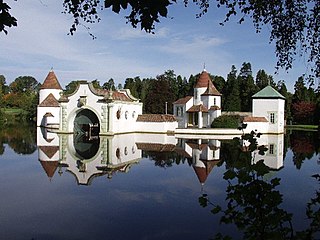
Craigtoun Country Park is a country park located approximately 4 miles to the south-west of St Andrews in the county of Fife, Scotland. The site is currently owned by Fife Council, with park amenities being operated as of 2012 by the charitable organisation Friends of Craigtoun Park.

Lieutenant-General Robert Balfour of Balbirnie was a son of John Balfour of Balbirnie and Mary Gordon, daughter of James Gordon of Ellon. He was an officer in the 2nd Dragoons and the Fife Light Horse. His younger brother James was a Member of Parliament and grandfather of Arthur Balfour, Prime Minister of the United Kingdom from 1903 to 1905.

Balls Park in Hertford is a Grade I Listed mid-17th-century house. The estate and house are set in over 63 acres of parkland which is listed Grade II on the English Heritage Register of Parks and Gardens of Special Historic Interest. The estate and house has been claimed to have been the inspiration for some of Jane Austen’s novel Pride and Prejudice, which is set in Hertfordshire, however the only citation to this is a sales ad in a newspaper.

The Glen, also known as Glen House, is an estate and country house in the parish of Traquair, southern Scotland. It is located in the glen of the Quair Water, around 5 kilometres (3 mi) south-west of Innerleithen, and 9 kilometres (5.6 mi) south-east of Peebles, in the Scottish Borders. The estate is recorded from the 13th century, but the present Glen House was built in the mid 19th century. The house is protected as a category A listed building, and the grounds are included in the Inventory of Gardens and Designed Landscapes in Scotland, the national listing of significant gardens. Besides the house, the Temple, stables, and the "Lion Gate" are also category A listed.

Formakin House is an early 20th-century mansion and estate in Renfrewshire, Scotland. It is located 2 kilometres (1.2 mi) south of the Firth of Clyde, and 2.5 kilometres (1.6 mi) west of Bishopton. Formakin was designed by Robert Lorimer for wealthy businessman John Holms, though the main house was never completed. It declined during the 20th century, but in the 1990s, restoration of the estate buildings was completed.
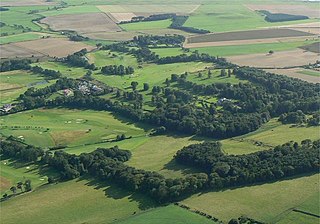
Charleton House is located in the East Neuk of Fife, eastern Scotland. It lies around 1.5 kilometres (0.93 mi) west of Colinsburgh, and 5 kilometres (3.1 mi) east of Lower Largo. The house dates from the mid 18th century, with later additions, and is the home of Baron Bonde.

Touch House is a country house located 4 kilometres (2.5 mi) west of Stirling in central Scotland. It stands at the foot of the Touch Hills, on the south side of the River Forth. The house incorporates a 16th-century tower house, but its present form dates to the middle of the 18th century when the south facade was added, described by Historic Environment Scotland as "Probably the finest Georgian elevation in the County of Stirling."
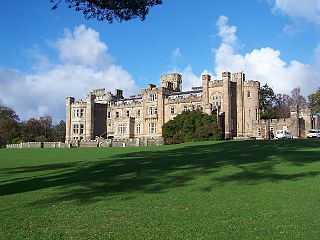
Francis William Deas was an influential Scottish Arts and Crafts architect and landscape designer in the late 19th century and first half of the 20th century. He was a keen amateur painter, largely of landscapes. His most important work was probably the restoration of Castle Toward.

James Balfour was a Scottish nabob who became a landowner and politician. The son of a prosperous and influential Scottish gentry family, he became a trader in India. Having made a fortune supplying the Royal Navy, he returned to Scotland to buy several landed estates, including Whittingehame in East Lothian where he built a classical mansion.

Langley Park is a historic house and estate in Buckinghamshire, England. The parkland is currently known as Langley Park Country Park, and is open to visitors. The house, designed and built by Stiff Leadbetter, is a Grade II* listed building, and the parkland, designed by landscape architect Lancelot 'Capability' Brown, and gardens are Grade II listed together. The house and grounds are owned by Buckinghamshire Council, and the house is leased as a privately-run hotel.





















